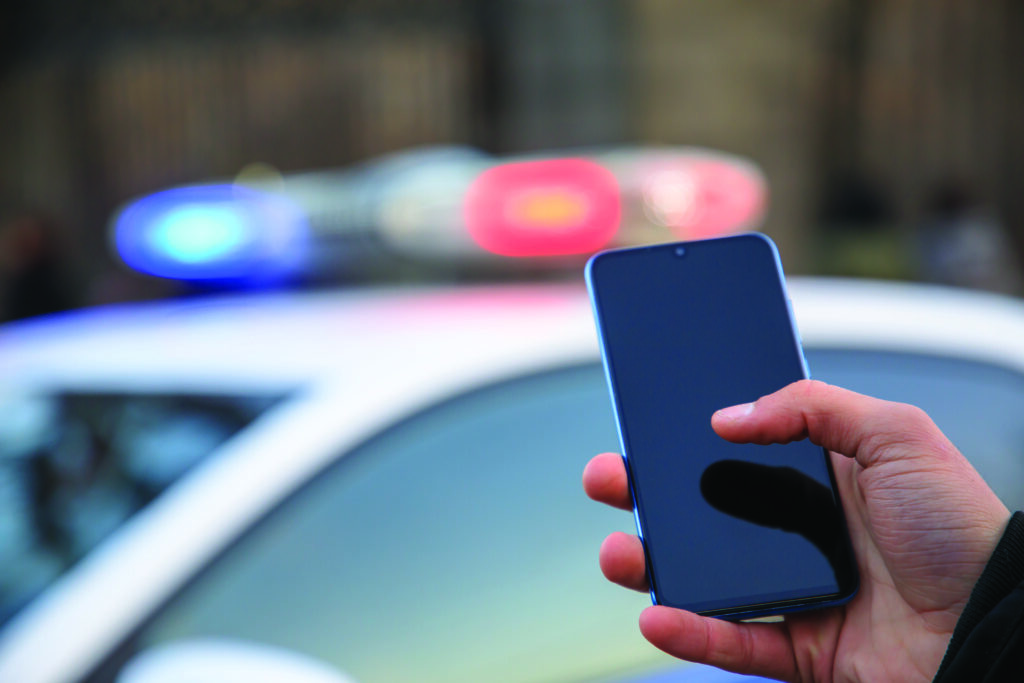
Features
Technology
Opinion
Mission critical technology to aid first responders
November 24, 2022 By Brittani Schroeder
 Photo credit: Daniel / Adobe Stock
Photo credit: Daniel / Adobe Stock In emergency situations, Canada’s first responders need information delivered accurately and quickly. In 2022, Samsung Networks and TELUS deployed next-generation Mission Critical Push-to-X (MCPTX) services. What does this mean? First responders will be able to receive the data they need to improve responsiveness and operational efficiency and drive better public safety outcomes. It is designed to enhance multimedia communications with features such as video, geographic information system (GIS), geo-fencing, remote database access and more.
Smart city solutions are a series of data-driven, intelligent and integrated solutions delivered by TELUS to enhance public safety, promote sustainability, and optimize operations. “Samsung is committed to delivering innovative MCPTX solutions, which will ultimately support TELUS with bringing their smart cities vision to life, as the technology helps to increase emergency response times and secure public spaces,” said Stephen Wiktorski, vice president and head of networks at Samsung Canada.
Developing a new technology
The MCPTX technology was in development for many years and is part of the international standards body 3GPP, which is responsible for developing all wireless standards. “Any interested party is able to contribute to the standard and help evolve it. This is a huge advantage over older, proprietary types of push-to-talk (PTT) technology which were closed and limited in scope and interoperability,” said Wiktorski.
Wiktorski said that several catastrophic emergencies occurred around the world that exposed the limitations of traditional PTT technology and forced a need for a more advanced communication service for first responders. It was then that Samsung began their work with standards bodies and service providers to develop MCPTX services that would support seamless, prioritized communications with advanced features on a prioritized network.
When catastrophe strikes
A catastrophic event, like a terrorist attack or natural disaster, requires a coordinated approach for all first responders.
MCPTX allows for the priority of first responder communications by putting them first in line to connect to the network. If the network experiences congestion, MCPTX users are given first access to connect to the network before all others. “Samsung’s MCPTX solution also offers pre-emption, which allows the network provider to remove regular users from the network to re-allocate resources to first responder teams. In addition, we offer QoS (Quality of Service) which gives a guaranteed bit-rate and latency specifically for MCPTX-related traffic,” said Wiktorski.
Working with LMR technology
The MCPTX technology can work alongside Land Mobile Radio (LMR) technology to augment its limited capabilities by allowing first responders to transmit and receive pictures and video, while also being able to send data such as location and texts to emergency dispatchers at a greater distance, said Wiktorski.
First responders can also use the technology to connect to IOT devices, which could allow for vital patient health information to be transmitted during dangerous situations. “This is done over the LTE network where data is given priority over non-critical traffic.”
A catastrophic event, like a terrorist attack or natural disaster, requires a coordinated approach for all first responders.
Samsung has also taken an additional step and has developed technology to allow for MCPTX devices to interwork with LMR systems, enabling calls between MCPTX and LMR devices. Due to MCPTX being an open standard, it allows for interoperability between different systems. This means it is possible for first responders in Canada and the U.S. to be placed within the same group to deal with emergency situations occurring at the border.
Assisting law enforcement
Police officers encounter a variety of scenarios that might be improved with the aid of MCPTX technology. “For example, an officer might be apprehending a suspect and suddenly require back-up. Currently, they would only be able to call for help within their LMR network’s coverage area. With MCPTX, video from a body-worn camera could be pushed immediately anywhere within the LTE network to help dispatch a coordinated response,” said Wiktorski. A map of the officer’s location could also be shared with other police officers on the ground or in their cars, to help improve the likelihood of a successful arrest while ensuring the officer’s safety.
Print this page